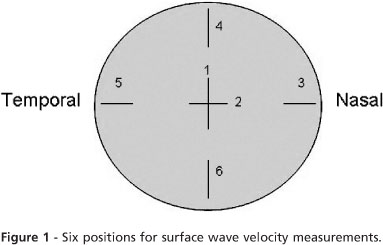OBJECTIVE: To evaluate the impact of the creation of corneal flaps at different thicknesses on the biomechanical properties of swine corneas. METHOD: Twelve swine eyes were obtained to form two groups: 100 μm flap thickness and 300 μm flap thickness. Each eye was submitted to the following examinations: raster topography to investigate corneal curvature alterations, ocular response analyzer to investigate corneal hysteresis change, optical coherence tomography to measure central corneal and flap thickness and sonic wave propagation velocity as a measure of stiffness, before and immediately after flap creation. After flap amputation, surface wave velocity measurements were repeated. RESULTS: Measured flap thicknesses were statistically different for thin and thick flap groups, with an average of 108.5 + 6.9 and 307.8 + 11.5 μm respectively. Hysteresis and corneal resistance factor did not change significantly after flap creation in the thin flap group. With thicker flaps, both parameters decreased significantly from 8.0 +1.0 to 5.1 +1.5 mmHg and from 8.2 + 1.6 to 4.1 +2.5 mmHg respectively. Simulated keratometry values increased in the thick flap group (from 39.5 + 1 D to 45.9+1.2 D) after flap creation but not in the thin flap group (from 40.6 + 0.6 D to 41.4+ 1.0 D). Regarding surface wave velocity analysis, the surgical procedures induced statistically lower results in some positions. CONCLUSION: In the experimental conditions established by this model, thicker flaps presented a greater biomechanical impact on the cornea.
LASIK; Flaps; Ectasia; Femtosecond laser; Cornea






